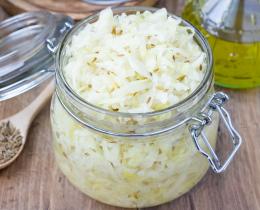The human stomach is a wondrous muscular hollow that is truly the center of magical transformation in the human body. Sure, the brain gets much of the attention for making us rational and evolved, but the stomach allows you to bring something from outside of your body (food) and convert it into you—the conduit between you and the edible world that surrounds you.
But as much as we can load into our stomach, there are the scraps and bits of inedible food that won’t make such a transformation, and we call this food waste. The average American household discards over a pound of such waste each day, which is equal to millions of tons each year for the entirety of the country. The solution to such tonnage is another hollow of transformative potential—the compost bin.
Composting, for the uninitiated, is the act of turning food waste and yard scraps into aerobically derived remnants of organic material, or simply, nutrient-rich compost to fortify your garden. This is done, albeit rather slowly, through a means of organic decomposition over time in an enclosed bin that allows transformation, but keeps critters and vermin away. Although introducing a few hundred red worms, which can eat their own body weight in food scraps each day, into your compost pile will not only greatly speed along the process of turning scraps to composts, but will enrich the quality of your compost overall (this is called vermicomposting).
Composting has been widely accepted by everyone from gardeners to environmentalists as the sensible thing to do with a good portion of our garbage. Even huge cities like Seattle and San Francisco, as well as New York City just this year, have initiated civic composting programs that provide the inarguable simplicity and convenience of curbside pickup of food scraps for its residents. In essence, composting is undeniably beneficial and as easy as throwing garbage out, at least until it is not.
While the basic idea of composting is easy, as with anything, things can go wrong and leave you with a putrid pile of rotting garbage attracting all manner of bugs and vermin. Search the internet for a bit and you will find a number of accounts of compost bins and piles taken over by mold, rot, or worst of all…maggots. Such lessons in organic decomposition have been off-putting and have scared many away from the endeavor. This is unfortunate, because, while composting does have some pitfalls, maintaining the health of your compost project is science, but not rocket science. The thing to remember is that your compost pile is a living and, most importantly, breathing entity that needs some care.
A healthy compost pile is fueled by millions of unseen microscopic bacteria and organisms, and maintaining the right environment for your colony of compost helpers is essential. There exist fantastic resources online (like this one from Howtocompost.org) that help answer most specific questions you may have about the ins and outs of composting, but by aerating (or turning) your compost every few days and keeping out undesirable ingredients (like meat, bones, fat, and dairy) you will avoid such pitfalls. The trick is to understand the pile as a living and breathing entity that, while somewhat independent, needs some guidance and care to find its transformative power. The results are not just environmentally sound, but rewarding as you are bringing energy back to something that would otherwise be garbage.



